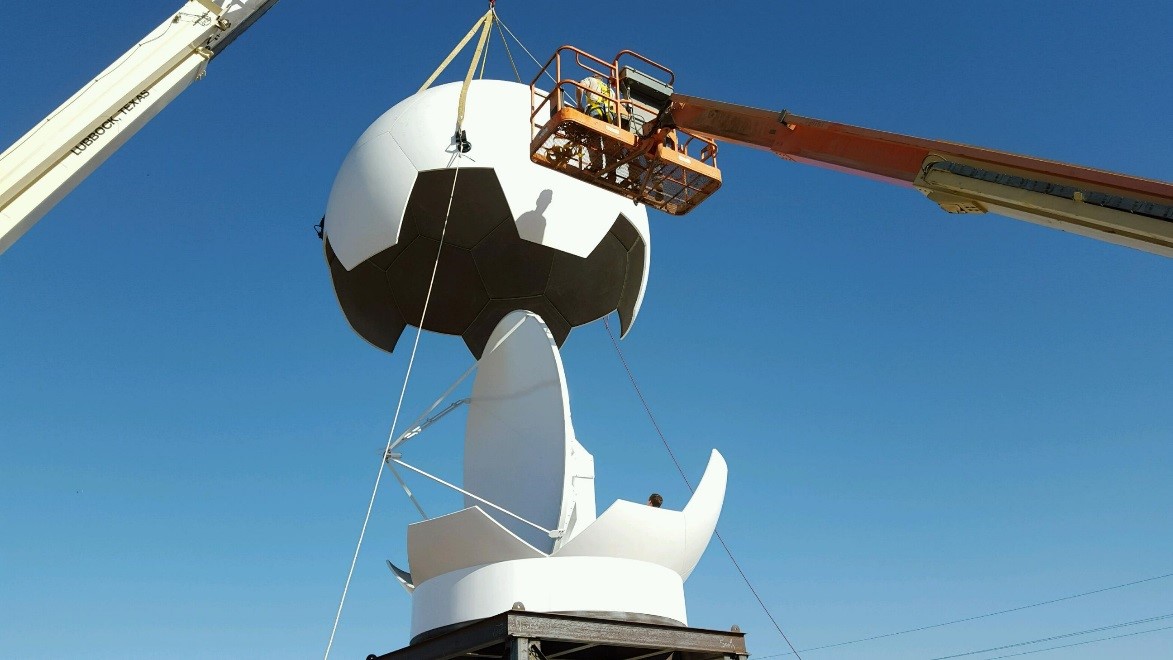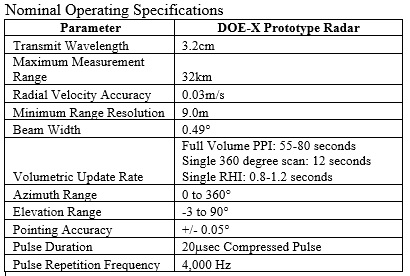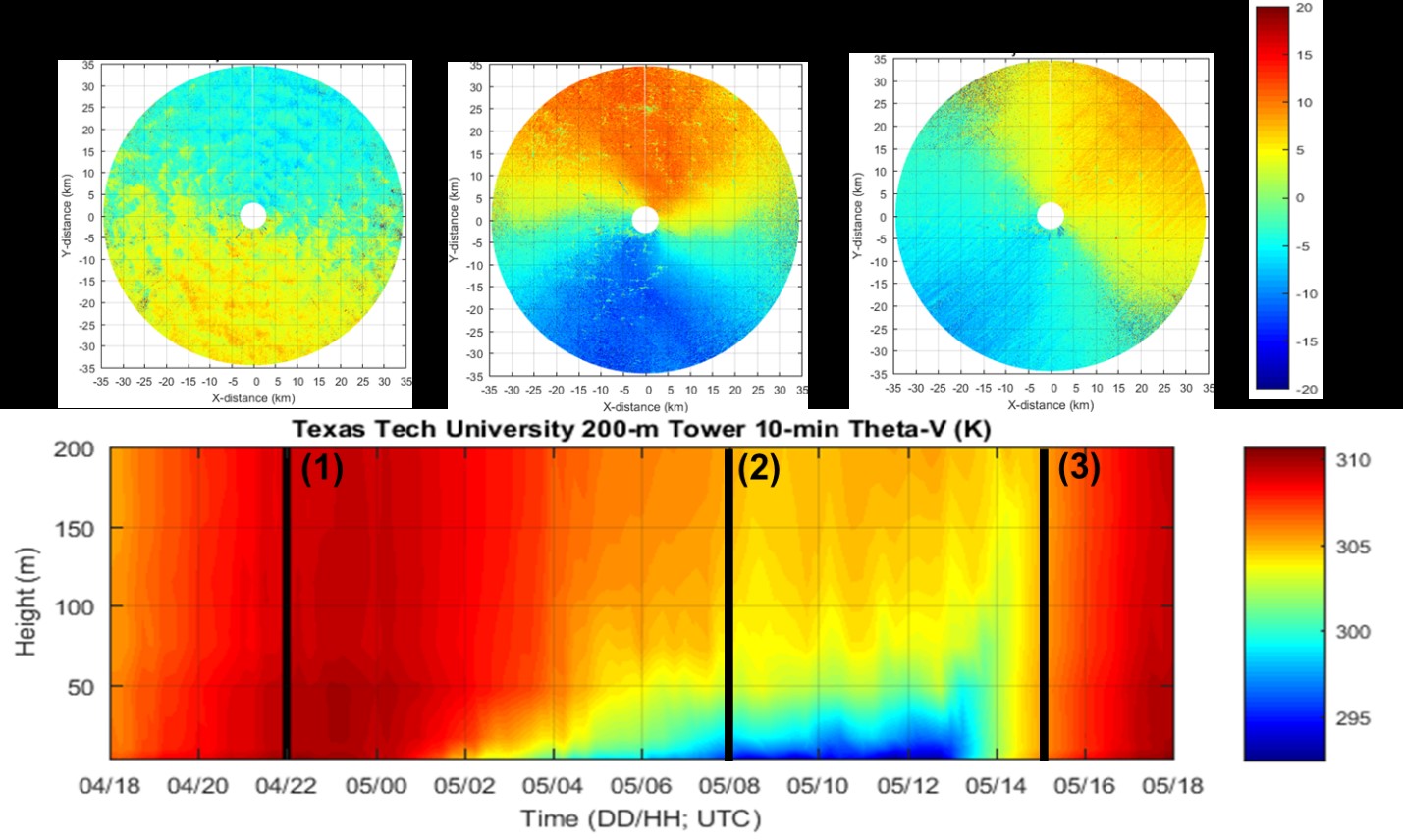DOE X-band Radar
 Figure. Final radome lift during the installation phase for the DOE-X radar.
Figure. Final radome lift during the installation phase for the DOE-X radar.
The DOE-X radar prototype was funded by the US Department of Energy and originally developed to advance wind plant complex flow measurements. The specialized radar has also been used for atmospheric and defense-related research agendas. Relative to other "off the shelf" radar technologies, the TTU specialized transmitter and receiver chains were specifically designed to enhance data availability in non-precipitating atmospheres. The new radar prototype was integrated at TTU using components from various suppliers across the world, and then was installed at the Reese Technology Center in May 2016.
Following installation, functionality and performance testing were completed, and subsequent comparative analysis indicated that the new prototype greatly enhanced data availability by a factor of 3.5-50 in almost all atmospheric conditions relative to the TTUKa radars (the baseline used for comparison).
The new prototype also provided enhanced signal quality in clear air (i.e. non-precipitating) environments, mitigated atmospheric attenuation, and extended the useful range of data collection to beyond 30km in cooperative atmospheric conditions.
Importantly, the new DOE-X prototype has shown some initial indications of benefiting from Bragg scattering when the thermal stratification of the atmosphere is strong (i.e. during nocturnal hours) providing a unique advantage for many applications. The radar prototype is also able to detect bird activity at ranges beyond 15km.
Commercial applications of the developed X-band radar concept have started with the deployment of two early-stage commercial units for DONG Energy in the United Kingdom by SmartWind Technologies (www.smartwindtech.com).
Starting in the summer of 2016, these units have been providing continuous dual-Doppler coverage of the Westermost Rough wind plant. The commercial effort has also resulted in additional software development to assist end users in evaluating, visualizing, querying and extracting relevant radar data from a large archive of measurement.


National Wind Institute
-
Address
1009 Canton Ave., MS 3155 Lubbock, TX 79409-3155 -
Phone
National Wind Institute - 806.742.3476; Renewable Energy - 806.742.6284 -
Email
National Wind Institute - nwi@ttu.edu; Renewable Energy - windenergy@ttu.edu
